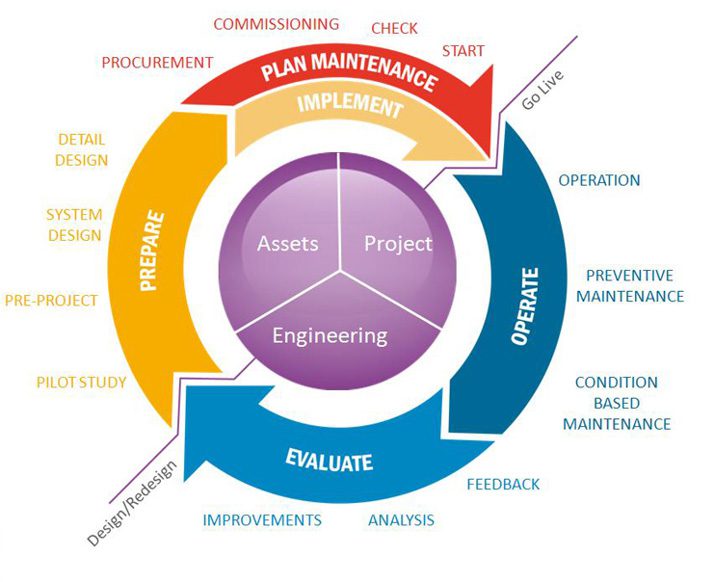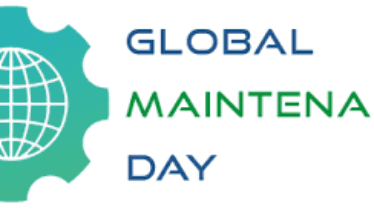What Drives Asset Life Cycle Costs? by Keith Mobley, Life Cycle Engineering
When questioned about their operations, too many executives believe that maintenance is the primary, if not sole, driver behind chronic reliability problems, high capital replacement costs and the excessively high life cycle costs of their physical plant. They point to variances in maintenance budgets, excessive downtime and a myriad of other factors that on the surface appear to be the result of the ineffective maintenance. But in most cases, a closer look reveals a completely different story. Maintenance is responsible for repair and recovery following unplanned or unexpected asset-related events that occur regardless of the forcing function that caused the event. Granted some of these events are maintenance-related, but the majority are not.

How do you separate maintenance-driven from non-maintenance driven issues?
First, one must look at the role and span of control of your maintenance organization. The role of maintenance is to preserve or maintain the physical condition and operating capability of plant assets. At best, maintenance can perform preventive tasks, such as clean, lubricate, align, level, and adjust, that provide the basic care needed; they can replace wear parts before the assets incur permanent damage; and they can upgrade and overhaul as needed or determined by engineering. None of these tasks, individually or in combination, creates or improves reliability—they only sustain the inherent reliability that was designed into them. While effective sustaining maintenance is essential, execution of maintenance tasks is too often controlled by external functions ranging from marketing to research and development. As a result, sustaining maintenance is too often not performed in a timely or effective manner. The result is shorter useful life, higher costs and loss of capacity. But is this truly a maintenance-driven deficiency? Statistics compiled over the past 30 years indicate that 17% of reliability problems are caused by deficiencies within the span and control of maintenance. What about the other 83%?
Obviously physical asset reliability starts with its design. If the design is sound, there is a high probability that it will remain reliable, achieve its designed useful life, and meet its projected life cycle cost projections. Conversely, faulty design assures chronic reliability issues that cannot be undone or even mitigated. All electro-mechanical assets and production systems have inherent reliability issues in their design. Most are manageable and will have little impact when all operating parameters, such as incoming materials, mode of operation, and range of products are consistently followed, but reliability issues can become catastrophic when these parameters are violated. At least 27% of asset reliability issues are caused by improper application—trying to do something the system was not designed to do. One recent example was trying to push 12,000 lbs/hr through a grinder rated at 3,500 lbs/hr. It should be obvious this cannot work, but management of this plant persisted in doing so, blaming every catastrophic failure of the grinder on poor maintenance.
Assuming a viable design, the manufacturing practices used to translate the design into a production system has an indelible impact on its reliability. Choice of materials, adherence to tolerances and many other variables in this process make the difference between a reliable and chronic-problem system. Since many organizations have gone away from functional specifications, factory and site acceptance testing, and most of the checks and balances that were once part of the procurement process, best practices are often not followed by the vendor or vendors, and the result is a totally unreliable system. Most databases suggest that 95% of the asset’s life cycle cost is predetermined in the design/manufacturing process.
Once the asset is installed and becomes operational, the drivers change from external to internal forcing functions. This is the point when many assume that maintenance is the primary driver. But, let us look a little deeper. Primary control of an organization’s installed capacity and assets lies with sales and marketing. These organizations determine when and how the assets are used. They define the product mix and delivery requirements that must be met. These demands are then interpreted by production planning and converted into the production schedule that determines whether or not the assets will be used within design parameters and whether they will receive adequate sustaining maintenance. Combined, these become the primary driver of life cycle cost. Common issues that translate directly into reliability and high life cycle costs include excessive changeovers, exceeding design parameters, deferred maintenance, and extended idle time.
Engineering, research and development, and procurement also contribute to reliability and life cycle cost issues. Both engineering and R&D make changes to the assets without a thorough engineering design review. This can dramatically lower reliability and increase life cycle costs. In an effort to meet its perceived mission—low cost—procurement provides off-spec repair parts, marginal materials and low-bid replacement assets.
Since the 1960s these issues have become more and more severe. Initially the changes were incremental but recently seem to have grown exponentially. But even today, with the reliability and life cycle costs problems escalating, few decision-makers are aware they exist. Even those who recognize there is a problem write it off as poor maintenance or just a cost of doing business. No one seems willing to resolve the problem.
Putting all of this in perspective, these problems should not exist and can be resolved. It has to start by educating decision-makers at all levels of the organization so that they understand asset reliability from conceptual design to decommissioning and disposal. Best practice standard processes and procedures that govern each step in the assets’ life cycle must be created, implemented and universally enforced. This requires a radical change in the CAPEX procurement process that mandates a comprehensive functional specification and enforcement of the specification in vendor selection. Vendors must be held accountable for delivering a fully compliant system, not what they want to provide.
This transformation must address organization functions that are rarely linked to reliability and overall operational performance. Sales and Marketing must transition from loading the production schedule with non-standard products, unreasonable delivery commitments, or no sales at all. Marketing’s ability to forecast demand and the Sales groups ability to convert it into a backlog of standard products, with the projected mix and delivery schedules, will eliminate most of the reliability and cost problems that are inherent in reactive organizations. Engineering, R&D and Maintenance must follow a management of change process that prohibits modification of assets without a complete engineering design review and appropriate approvals. Operations and Maintenance must implement and enforce best practice standard processes and procedures that assure universal compliance.
Asset life cycle cost is a true variable and can only be controlled when all of the external and internal forcing functions are minimized. It starts with best-practice design that eliminates inherent reliability issues, followed by the vendor’s adherence to best practices, and universal adherence to business practices that enable best life cycle cost in all of the organization’s functional groups—starting with sales/marketing and production planning/scheduling. As a holistic issue, asset reliability and life cycle cost is an executive level issue and must be driven at that level. The key is best practices, defined by standard work and universally enforced by executive management.
Keith Mobley has earned an international reputation as one of the premier consultants in the fields of organizational performance optimization, reliability engineering and effective change management. He has more than 50 years of direct experience in corporate management, process optimization, and reliability engineering. For the past 25 years, he has helped hundreds of clients worldwide achieve and sustain world-class performance. Keith can be reached at kmobley@LCE.com.



